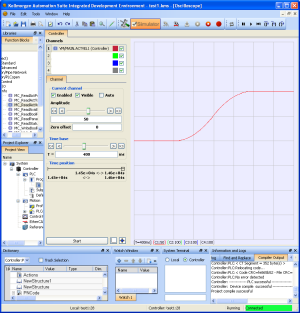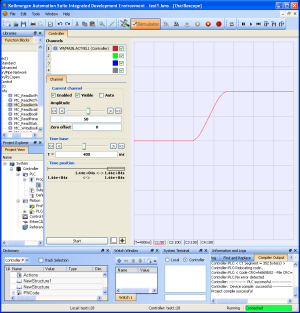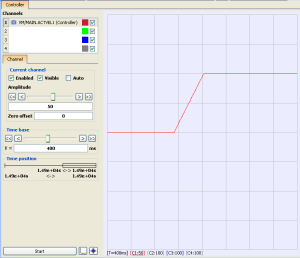S-curve and Trapezoidal Acceleration / Deceleration
S-curve
If the Jerk input of a motion function block is non-zero, S-curve acceleration / deceleration is used.
- The Acceleration input specifies the maximum acceleration / deceleration reached during changes in velocity.
- The Deceleration input is unused.
Small Jerk Acceleration
The Figure: "Small Jerk Acceleration" is a velocity plot of the acceleration of a move when Jerk is a small value.
The smaller the Jerk value, the more gradual the rate of change of acceleration / deceleration when transitioning from one velocity to another.
Figure 1: Small Jerk Acceleration
Large Jerk Acceleration
This Figure: "Large Jerk Acceleration" is a velocity plot of the acceleration of a move when Jerk is a large value.
The larger the Jerk value, the more abrupt the rate of change of acceleration / deceleration when transitioning from one velocity to another.
Figure 2: Large Jerk Acceleration
Trapezoidal
If the Jerk input of a motion function block is zero, trapezoidal acceleration / deceleration is used.
- The Acceleration input specifies the linear acceleration rate.
- The Deceleration input specifies the linear deceleration rate.
This Figure: "Trapezoidal Acceleration" is a velocity plot of the acceleration of a move when trapezoidal acceleration is used (Jerk = 0 (zero)).









